The Doberman Pinscher: A Comprehensive Guide
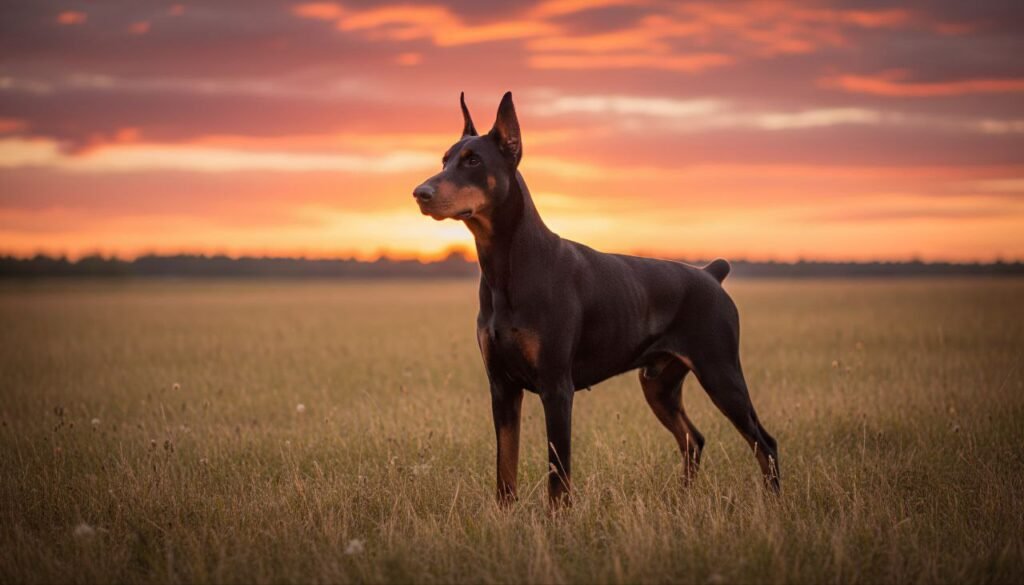
The Doberman Pinscher, often referred to simply as a Doberman, is one of the most distinctive and revered dog breeds in the world. Known for their sleek, muscular build, and keen intelligence, Dobermans are recognized as loyal companions, protective guard dogs, and successful working dogs in various roles.
This article delves into the history, physical characteristics, temperament, care needs, and more, offering a thorough understanding of the breed.
Doberman Pinscher History and Origins
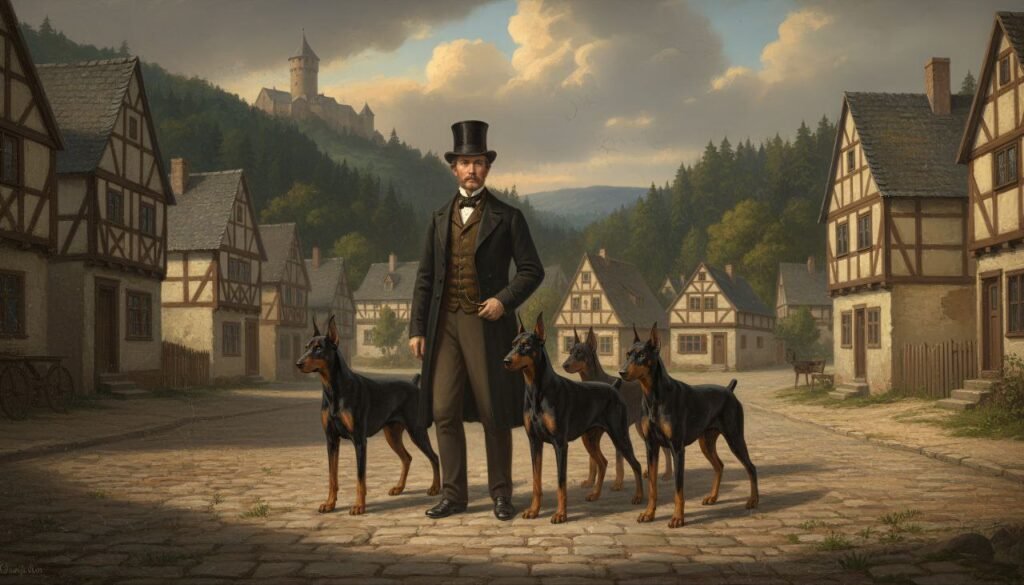
The Doberman Pinscher’s origins can be traced back to the late 19th century in Germany. The breed was developed by a German tax collector named Karl Friedrich Louis Dobermann. As a tax collector, Dobermann needed a dog that could protect him during his dangerous daily rounds, which involved handling large sums of money and often facing hostile individuals.
To create the ideal working dog, Dobermann selectively bred a variety of dogs, including:
- Rottweilers: For strength and guarding instincts
- Greyhounds: For speed
- German Pinschers: For agility
- Weimaraners: For tracking ability
The result was a dog that was strong, fast, intelligent, and protective—a perfect blend of qualities for both personal protection and working roles.
The Doberman quickly became popular in police and military work due to its intelligence and loyalty. The breed gained recognition worldwide, particularly in the United States, where it was officially recognized by the American Kennel Club (AKC) in 1908.
Doberman Pinscher Physical Characteristics
Size and Build
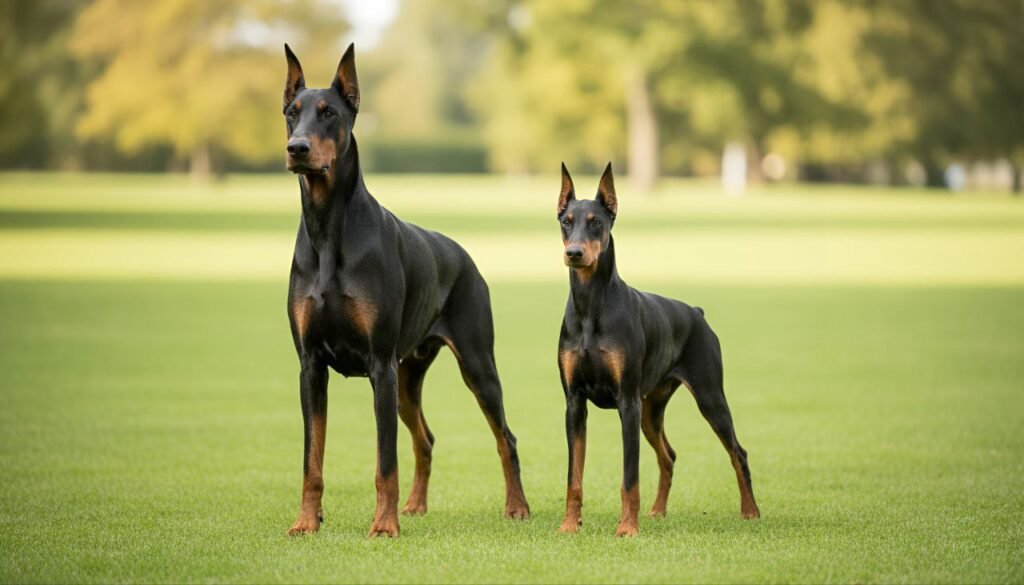
Dobermans are medium to large dogs with a sleek, athletic build. Their well-proportioned body conveys strength, agility, and endurance.
- Height: Males typically stand 26-28 inches tall at the shoulder, while females are slightly smaller at 24-26 inches.
- Weight: Males usually weigh between 75-100 pounds, and females weigh 60-90 pounds.
They are renowned for their powerful, muscular frame that allows them to excel in physical tasks. The breed’s distinctive, angular body gives them an elegant and imposing appearance.
Coat and Color
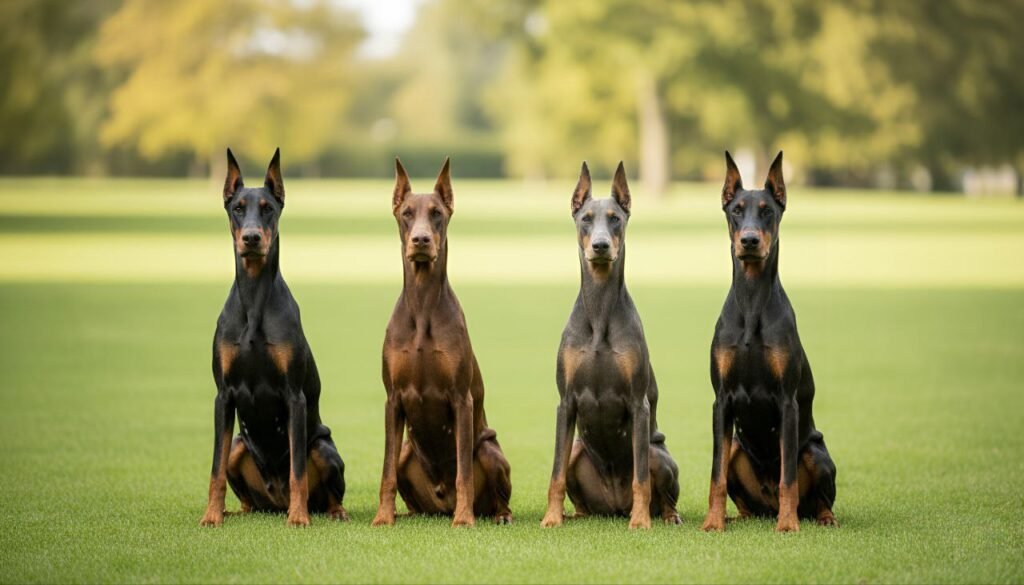
Dobermans have short, smooth coats that lie flat against their bodies, giving them a sleek, polished look. The most common coat colors are:
- Black and Tan: The most traditional coloration, with a black base and tan markings on the chest, legs, and face.
- Red and Tan: Similar to the black and tan variant but with a rich reddish-brown coat.
- Blue and Tan: A diluted version of black, resulting in a slate-blue coat.
- Fawn and Tan: A diluted version of red, with a lighter, yellowish-brown coat.
Their coats require minimal grooming due to their short length, but regular brushing helps keep shedding under control and promotes healthy skin.
Ears and Tail
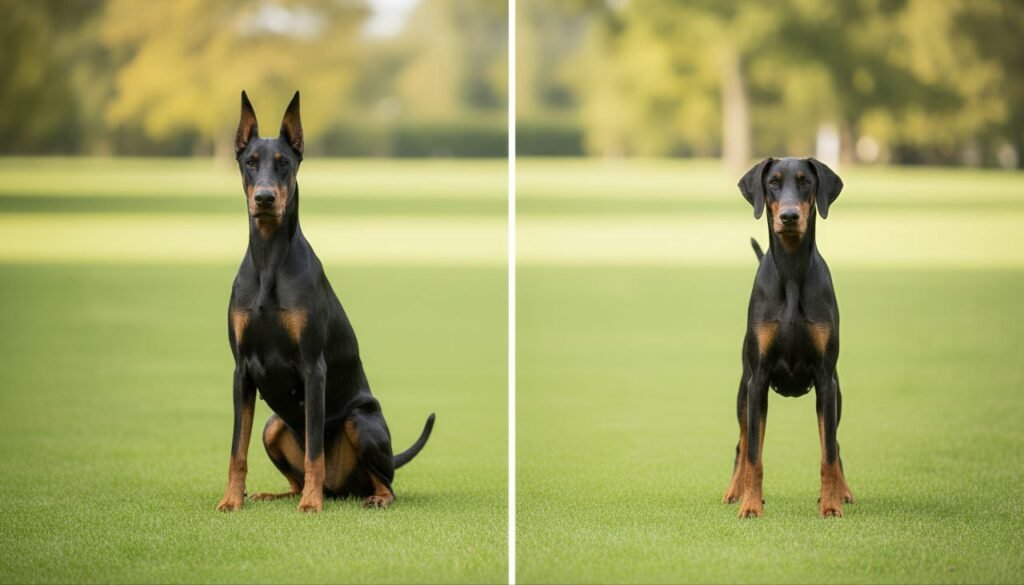
Historically, Dobermans were often “cropped” (ears trimmed) and “docked” (tails shortened) for functional or aesthetic reasons. However, ear cropping and tail docking are controversial practices today, and many countries have banned or discouraged them. In regions where these practices are legal, they are often done to maintain the breed’s traditional appearance. However, many Dobermans today retain natural ears and tails, which is gaining popularity due to a growing appreciation for natural aesthetics.
Doberman Pinscher Temperament and Personality
Intelligence and Trainability
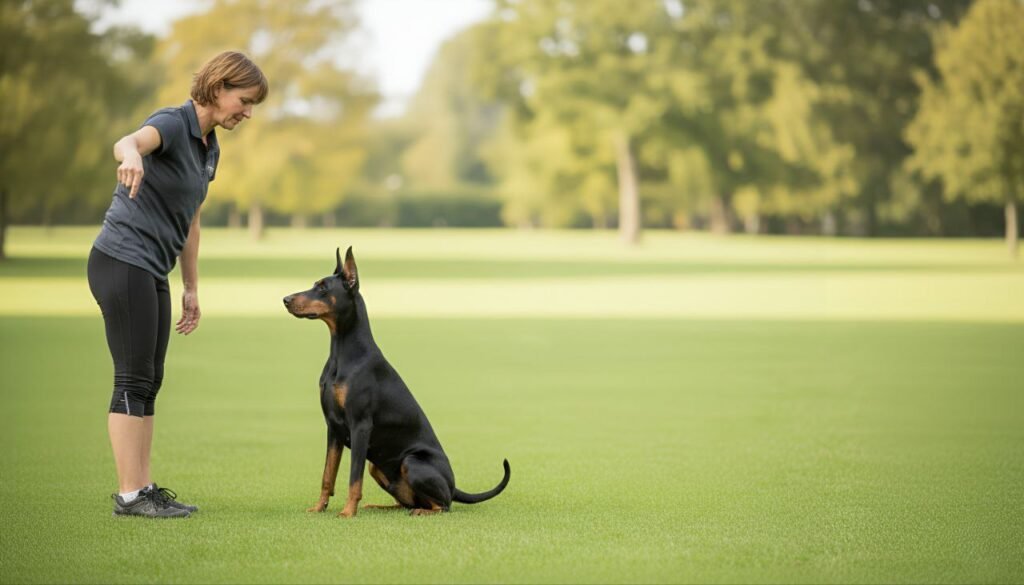
Dobermans are widely regarded as one of the most intelligent dog breeds. They are highly trainable and excel in obedience, agility, and various specialized tasks. Their intelligence makes them ideal candidates for roles such as police dogs, military dogs, search and rescue dogs, and service dogs.
However, this intelligence also means they need mental stimulation. If bored or under-exercised, they may become destructive. Proper training and mental engagement are essential to keeping a Doberman happy and well-behaved.
Loyalty and Protection
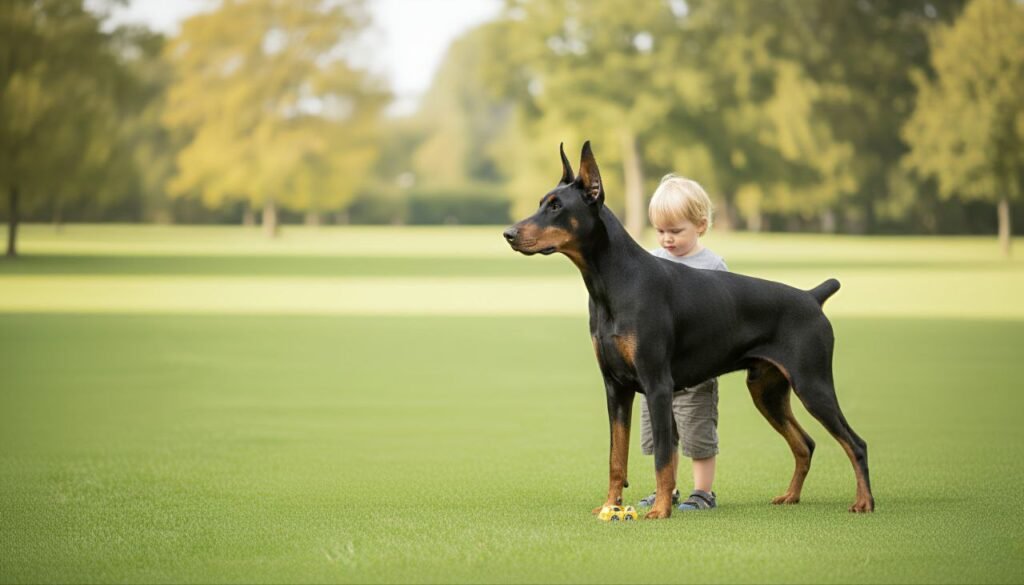
Dobermans are intensely loyal to their families. They are known to bond closely with their human companions, often becoming “velcro dogs” who want to stay by their owners’ sides. This loyalty makes them excellent family pets, but it also gives them strong protective instincts.
Dobermans are naturally suspicious of strangers and are excellent guard dogs. They are known to protect their family and property with unwavering determination. This protective nature, combined with their intelligence, makes them highly effective as personal protection dogs.
Socialization
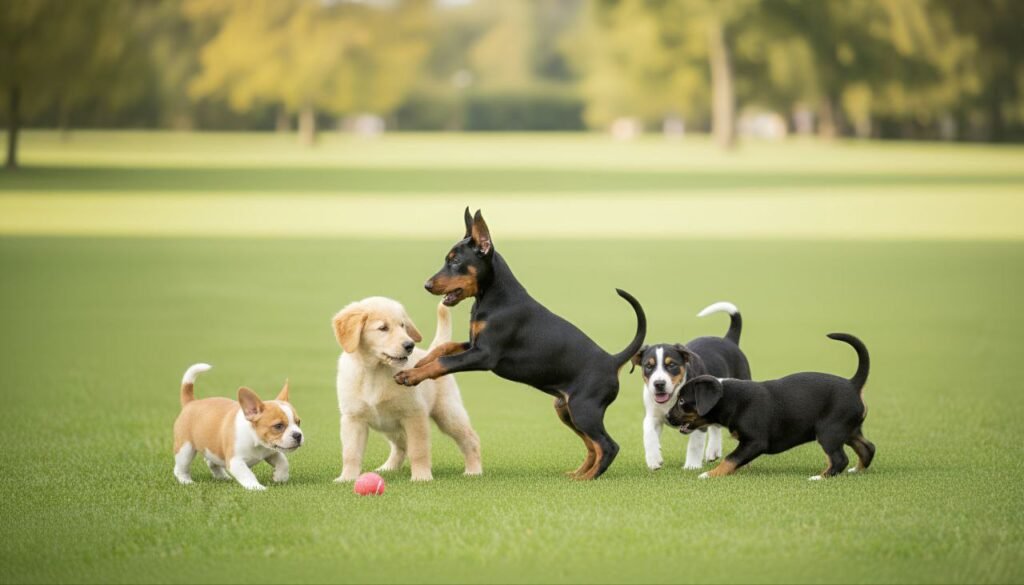
While Dobermans are protective by nature, they can be well-socialized if raised properly. Early socialization is critical, especially around other dogs and people. If they are not socialized correctly, they may become overly wary or even aggressive toward strangers or other animals.
Socialization should begin in puppyhood, with exposure to a variety of people, environments, and other animals. This helps develop a confident, well-rounded dog who can distinguish between real threats and harmless situations.
Also read: How to Potty Train Your Puppy in 7 Days with Quick Tips
Energy Levels
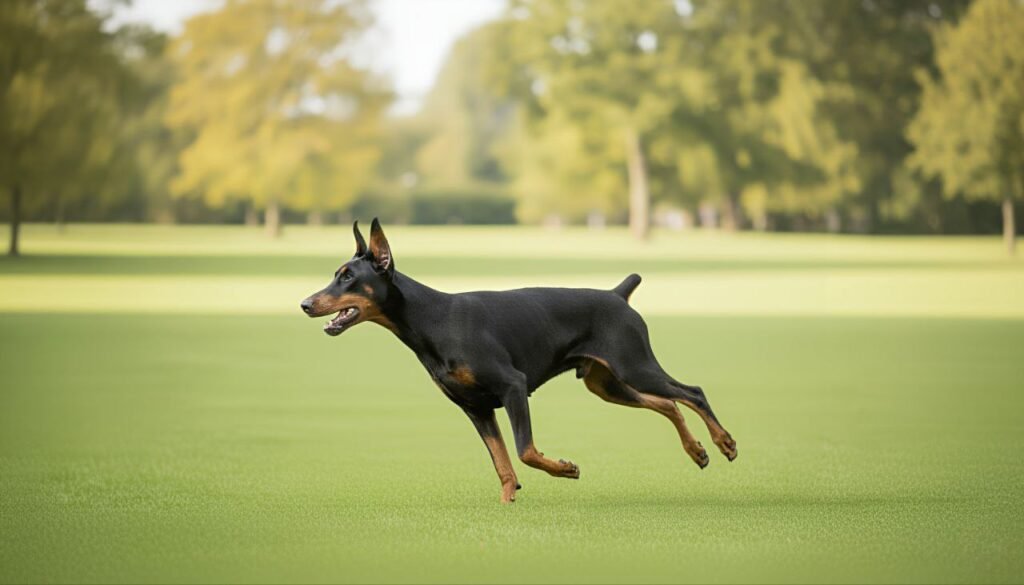
Dobermans are energetic dogs that require a significant amount of exercise. They are not a breed that can be content with just a walk around the block; they need both physical and mental stimulation. Activities like running, hiking, agility training, and obedience work are ideal for keeping them healthy and happy.
Without sufficient exercise, Dobermans may become anxious, frustrated, or even destructive. A tired Doberman is a well-behaved Doberman.
Doberman Pinscher Care and Health
Exercise Needs

Given their high energy levels, Dobermans require regular, vigorous exercise. A typical adult Doberman may need 1 to 2 hours of exercise per day, depending on their age, health, and individual temperament. Running, playing fetch, and engaging in agility training or obedience sessions can help burn off their energy. A lack of exercise can lead to undesirable behaviors like digging, chewing, or barking excessively.
Training and Mental Stimulation
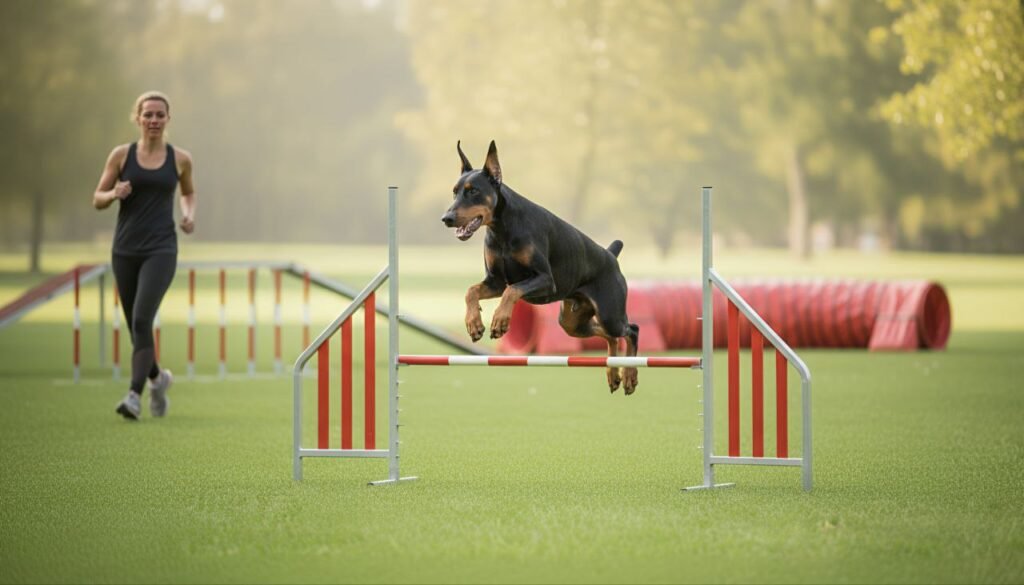
As highly intelligent dogs, Dobermans thrive on mental challenges. Obedience training, puzzle toys, and interactive games are all beneficial for engaging their minds. Training should be consistent, positive, and firm. They respond well to reward-based training and tend to excel in obedience competitions and canine sports.
Health Issues
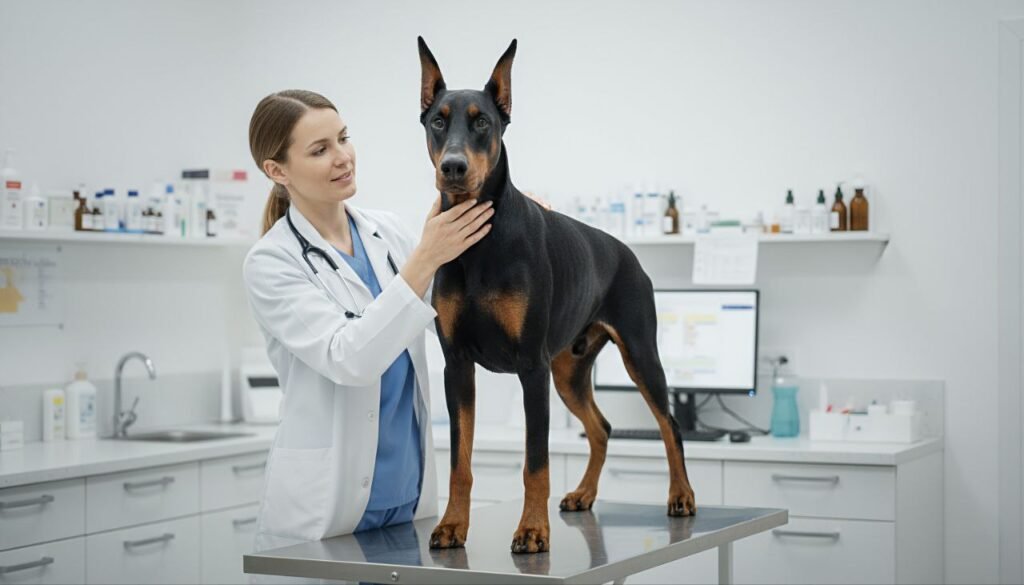
Like many purebred dogs, Dobermans are susceptible to certain health issues. Common concerns include:
- Dilated Cardiomyopathy (DCM): A heart condition that is unfortunately prevalent in the breed. Regular veterinary checkups are essential to detect early signs of DCM.
- Hip Dysplasia: A genetic condition where the hip joint doesn’t develop properly, leading to arthritis or pain.
- Hypothyroidism: A condition where the thyroid does not produce enough hormones, affecting metabolism and overall health.
- Von Willebrand’s Disease: A blood disorder that affects clotting and can lead to excessive bleeding.
Regular vet checkups, a balanced diet, and appropriate exercise can help mitigate the risk of these health problems. Dobermans generally live between 10 to 12 years, though this can vary based on genetics and overall care.
Grooming
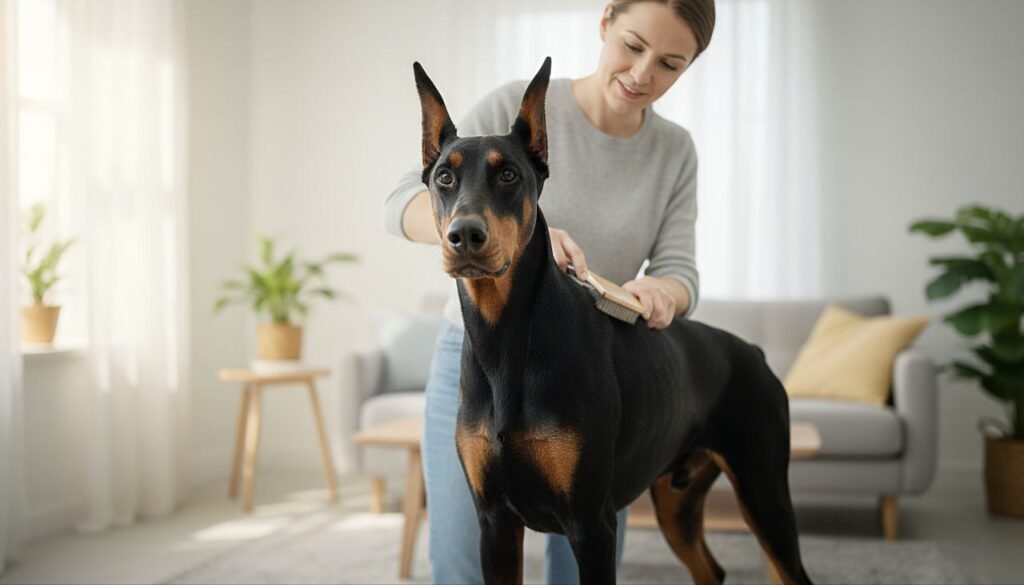
Doberman Pinscher have a short, low-maintenance coat that sheds moderately. Regular brushing helps keep their coat shiny and healthy. They also require occasional baths, but excessive bathing can dry out their skin. Cleaning their ears, trimming their nails, and brushing their teeth should also be part of routine care.
Suitability of the Doberman Pinscher as a family pet
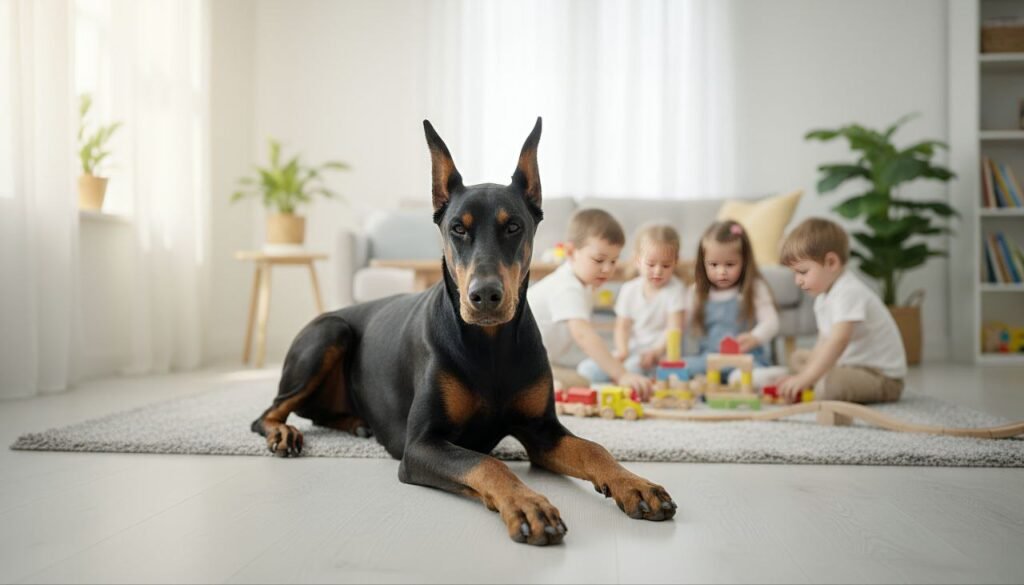
Doberman Pinscher can make wonderful family pets, provided they receive proper training, socialization, and exercise. They are good with children, particularly if they are raised together, and are known for being protective yet gentle with their loved ones. However, their natural guarding instincts may make them cautious around unfamiliar people, so early socialization is key.
They are best suited for active families or individuals who can provide the exercise, mental stimulation, and training they require. A Doberman may not be the best fit for a first-time dog owner due to their strong-willed nature and the need for consistent leadership.
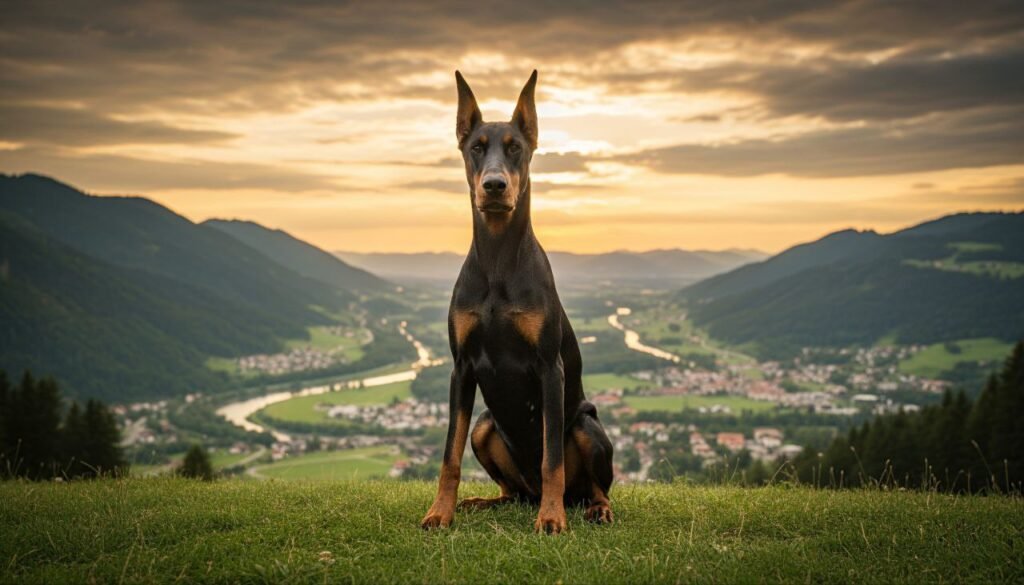
The Doberman Pinscher is a remarkable breed known for its intelligence, loyalty, and striking appearance. While they can be challenging to handle for inexperienced owners, they make exceptional companions for those willing to invest time in training, exercise, and socialization. Whether as a guard dog, working dog, or beloved family pet, the Doberman continues to impress with its unwavering devotion and remarkable abilities. If you’re prepared for the commitment, a Doberman can be a truly rewarding addition to your family.

